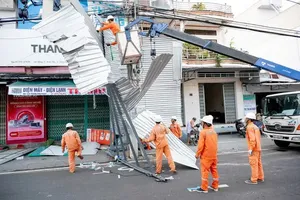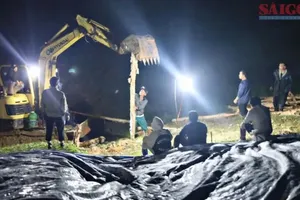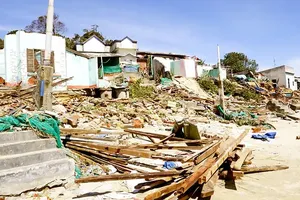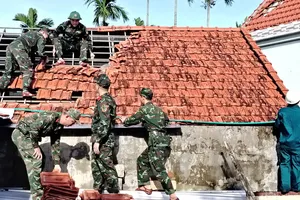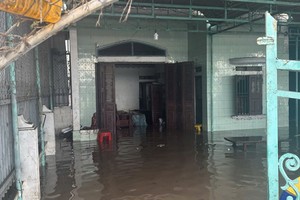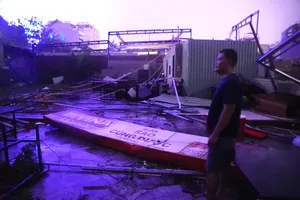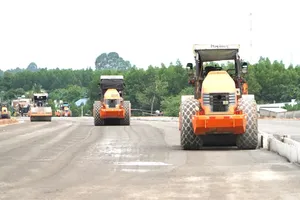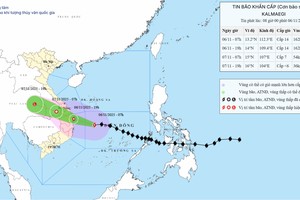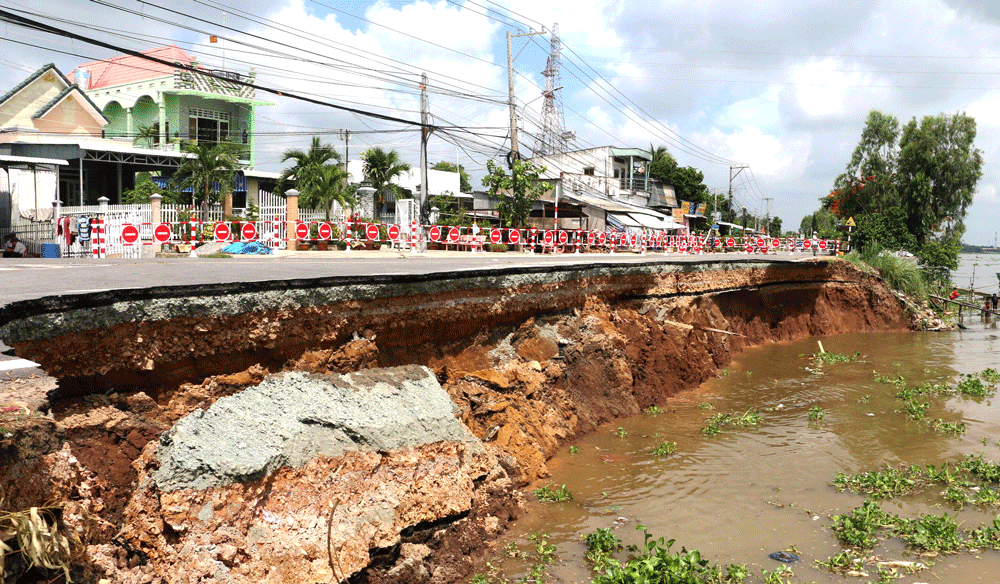
For the last couple of days, members in the family of Nguyen Van Sau in An Minh Bac Commune, U Minh Thuong District, Kien Giang Province have taken turn keeping watch for the sunken road in front of their house to warn residents travelling across the area. The cement road locating in the buffer zone of U Minh Thuong National Park has been built for many years facilitating travel of local people and transport of farm produce and goods until a crack was visible in the road face recently. Shortly after that a 25m long stretch of the road was completely sunken by 1-1.4m. Fortunately the incident occurred in daytime so it did not cause any human loss. Local authorities have placed warning signs in the area
Mr. Nguyen Chi Trung from Minh Thuan Commune, U Minh Thuong District said that the tarmac road in front of his house has been built for 20 years facilitating goods transport by truck. Suddenly a 15m long and 2m wide stretch fell down by 1.5m in the middle of May. Authorized agencies have fenced the sunken site to prevent accidents.
Elsewhere in the same commune, a 50m long and 3m deep depression has just occurred in Road 965. The remaining road face is only 0.2m wide so vehicles cannot travel across. At another section of the road, a 35m long and 1.4m deep sunken spot has also been found leaving the road face measuring less than 0.8m in width.
Mr. Nguyen Quoc Khoi, deputy chairman of U Minh Thuong District People’s Committee, worriedly said that depression in the district has reached red alarming level. Road 965 alone has eight sunken spots with the total length of about 265m and depth of 2.5m. Rural traffic roads in the district have also suffered 11 sunken spots with the total length and depth of 491m and 3m respectively.
Mr. Khoi said that depression has paralyzed traffic in some places and affected farm produce transport by truck. Transport by boat has also been stagnant as sewer system has been closed to prevent salt water penetration. In some places, farmers have been forced to transport their fruits by motorbikes from the fields to purchase points although it is time consuming and costly.
According to Mr. Khoi, the depression in the district is attributed to weak terrain composed of peat soil. In long term it is needed to conduct surveys to address exact reasons for the depression to have suitable solutions. So far the district has proposed the provincial People’s Committee and Department of Transport to quickly repair sunken sections to meet the demand of residents’ travel demand and farm produce transport. Still repair work has been very slow because of difficulties in transport of necessary materials.
The People’s Committee of U Minh Thuong District has required relevant agencies and communes to conduct surveys on roads and dikes which are highly prone to landslide in the rainy season to have measures to cope with the issue, minimize damage and ensure safety for residents.
In the southernmost province of Ca Mau, landslide and depression have been complicated. One of the worst hit is Co Xang-Coi Nam-Da Bac, the main traffic route to Hon Da Bac relic site. Rains in the early phase of the rainy season have worsened the situation. Recently, a 40m long and 3m deep depression took place in Khanh Binh Tay Commune, Tran Van Thoi District becoming the sixth depressed point in the route.
Chairman of the communal People’s Committee Tran Thanh Doan said that depression has been widespread cutting off traffic in many places.
Statistics show that Ca Mau Province now has up to 1,154 sunken spots with the total length of 25km. Of these, Tran Van Thoi District has 1,100 spots measuring 23km in length in total. The district People’s Committee feared that the depression and landslide will be more complicated in the upcoming rainy season.
Mr. Nguyen Long Hoai, head of the Water Resources Department in Ca Mau Province, said that drought has dried up many canals and shrunk soil. In the rainy season, water will seep into hollow slots in the ground so soil shrinkage areas will be highly vulnerable for landslide. He suggested the province to implement many measures to limit landslide in the rainy season such as putting warning signs in areas susceptible to landslide, increasing inspection to soon address spots at risk of landslide and depression.

